 Leading Blog | Posts by Month |
 Leading Blog | Posts by Month |
09.30.25

LeadershipNow 140: September 2025 Compilation
See more on
Posted by Michael McKinney at 11:20 AM
09.26.25

The Value of Inclusion in Successful Leadership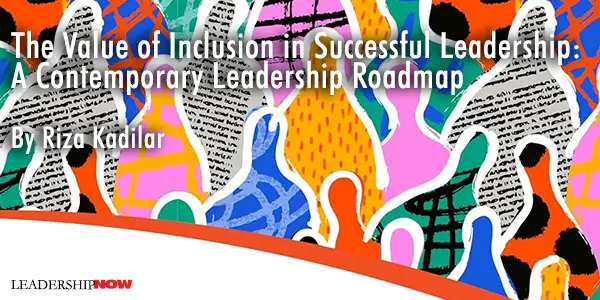
AS organizations navigate the complexities of the 21st century — marked by rapid technological advancements, evolving workforce demographics, and global socio-political shifts — the need for a fresh approach to leadership has never been more pressing. One of the most significant shifts in leadership thinking is the emphasis on inclusion as a core strategic imperative. Inclusion isn’t simply a fashionable term or corporate social responsibility checkbox; it’s a critical driver of long-term organizational success. Why inclusion is so important, and why now? Inclusion has become a focal point in organizational strategies because the world we live in is more interconnected, diverse, and complex than ever before. The rapid pace of technological change, the increasing mobility of the global workforce, and heightened societal expectations for fairness and equality are reshaping the expectations placed on leaders and businesses. But what makes inclusion so critical today, beyond the external pressures, is that, at its core, inclusion is about creating an environment where everyone feels they belong, valued, and able to contribute at their full potential. It goes beyond diversity, which focuses on representation, and encompasses how that diversity is leveraged. In an inclusive environment, individuals aren’t just invited to the table — they’re encouraged and empowered to participate fully and authentically. This enables organizations to tap into the vast reservoir of creativity, innovation, and insight that comes from diverse teams. Consider the analogy of a seed and its environment. A seed’s ability to grow depends not only on its inherent qualities but also on the conditions of the soil, water, and sunlight that surround it. Similarly, even the most talented individuals need an organizational culture that nurtures their growth and allows them to thrive. Without inclusion, diversity can lead to friction, isolation, and disengagement. But with inclusion, diversity becomes a powerful engine for innovation and problem-solving. The importance of inclusion is also underscored by the changing nature of work. As automation and AI reshape industries, organizations need to harness the full potential of their human capital. Diverse teams, when managed inclusively, have been shown to be more creative, better at problem-solving, and more adaptable in times of change. In fact, a study by McKinsey found that companies in the top quartile for gender diversity were 21 percent more likely to outperform on profitability, and companies in the top quartile for ethnic diversity were 33 percent more likely to have better financial performance. Inclusion fosters a culture of psychological safety where individuals are encouraged to take risks, voice unconventional ideas, and challenge the status quo — key ingredients for innovation in the digital age. Additionally, the rise of AI poses a unique risk. If AI systems are trained on biased data or monocultural perspectives, they risk perpetuating and amplifying existing inequalities. Leaders must be mindful of how they design inclusive environments not only for their human employees but also for the technologies that will shape the future of work. Inclusion, therefore, isn’t just a moral or ethical imperative; it’s a strategic necessity. Organizations that fail to embrace inclusion risk falling behind, not only in their ability to attract and retain top talent, but in their capacity to innovate and adapt to the challenges of the future. Rethinking leadership for the future One of the most profound shifts in leadership thinking is the move from leading individuals to leading relationships. In the past, leadership was often about managing people — assigning tasks, overseeing performance, and ensuring compliance. But as organizations flatten their hierarchies and embrace cross-functional, team-based structures, the real leadership challenge is in managing the relationships and dynamics within teams. How team members interact, share information, and resolve conflicts is often more critical to success than the performance of any one individual. In this context, the role of the leader is to act as a facilitator — someone who nurtures trust, fosters open communication, and ensures that every team member feels heard and valued. This requires a high level of emotional intelligence and the ability to create a psychologically safe environment where people can express vulnerability and dissent without fear of retribution. Leaders who excel in this area are able to harness the collective intelligence of their teams, leading to more innovative and effective outcomes. Another important shift in contemporary leadership is reflected in the increasing emphasis on purpose-driven leadership. Today’s employees, particularly Millennials and Generation Z, want to work for organizations that align with their values and contribute to the greater good. Leaders who can articulate a clear sense of purpose and connect their team’s work to a broader mission are better able to inspire and engage their employees. Purpose-driven leadership supports inclusion because it creates a common goal that transcends individual differences and unites people in pursuit of something bigger than themselves. A third contemporary leadership shift involves asking the right questions. Leaders today aren’t expected to have all the answers — in fact, it’s impossible to in these times of rapid change and complexity. Instead, effective leaders are those who ask the right questions, challenge assumptions, and encourage a culture of curiosity and continuous learning. This approach is particularly important for inclusion because it encourages leaders to seek out diverse perspectives and question their own biases. One of the most powerful questions a leader can ask is, “Whose voice are we not hearing?” By actively seeking out the perspectives of those often excluded from decision-making processes, leaders ensure their organizations are truly inclusive. The roadmap for increasing inclusion capacity Building an inclusive culture isn’t a one-off initiative; it’s an ongoing process that requires intentionality, reflection, and action. Follow this roadmap for increasing inclusion capacity in your organizations: 1. Measure inclusion and listen to your employees The most effective way to understand whether an inclusive culture exists in your organization is to ask the people within the organization. Surveys and feedback mechanisms can provide valuable insights into how employees feel about their ability to participate and belong. For example, ask employees to rate various aspects of their experience — whether they feel listened to and recognized for their contributions. These ratings can help leaders identify specific areas where inclusion efforts may be falling short. For example, if employees report feeling excluded from decision-making processes or if certain groups consistently score lower on measures of inclusion, leaders can take targeted actions to address these issues. 2. Model inclusive behaviors Inclusion isn’t just about policies and procedures; it’s about behaviors. Leaders must model the inclusive behaviors they want to see, such as being intentional about recognizing and celebrating diverse perspectives, fostering open communication, and creating spaces where all voices can be heard. One way to reinforce inclusive behaviors is by establishing inclusion ambassadors — individuals who champion inclusion across the organization and serve as role models for their peers. For example, in large multinational corporations, inclusion ambassadors might be tasked with identifying and sharing stories of inclusion in action. Perhaps it's a manager who goes out of their way to mentor underrepresented employees or a team that collaborates across departments to solve a complex problem. In highlighting these examples, organizations build momentum around inclusion and encourage others to follow suit. 3. Get to know your employees beyond their job titles Inclusion requires leaders to go beyond surface-level understanding and develop deeper relationships with their employees. This means getting to know what motivates them, their values, and how they respond in different circumstances. Organizations can facilitate this by creating opportunities for employees to share their stories and connect with one another on a personal level. This could take the form of hobby groups or cross-functional projects that encourage collaboration between employees who may not typically work together. 4. Equitable treatment, not equal treatment A common misconception about inclusion is that it involves treating everyone the same. Yet true inclusion recognizes that different people have different needs, and equitable treatment requires acknowledging and addressing those differences. For example, a working parent may need flexible hours, while an employee with a disability may need certain accommodations to perform their job effectively. Leaders must be attuned to these needs and ensure that every employee feels supported in a way that enables them to contribute their best. 5. Recognize and celebrate good work Recognition is a powerful tool for fostering inclusion, but it must go beyond individual achievements. In an inclusive culture, recognition should be about celebrating the collective success of teams and acknowledging the contributions of all members. Leaders should make it a point to regularly recognize not only what their employees achieve but also how they achieve it — highlighting behaviors that promote collaboration, empathy, and inclusion. Celebrating successes collectively reinforces the idea that everyone’s contribution matters and helps to build a sense of shared purpose. It also creates a culture where employees feel encouraged to support one another, rather than compete for individual accolades. 6. Commit to continuous learning Leaders and employees alike must be open to learning about their own biases, understanding different perspectives, and developing the skills needed to support inclusion. Organizations that prioritize continuous learning are better equipped to adapt to changing demographics, market conditions, and technological advancements. They’re also more likely to foster a culture of innovation, where diverse perspectives are valued and new ideas are encouraged. Essentially, inclusion isn’t just a nice-to-have — it’s a strategic imperative for organizations looking to succeed in today’s complex, fast-paced world. As we move forward into an increasingly diverse and interconnected world, the organizations that thrive will be those that not only embrace diversity, but also create the conditions for true inclusion. Now is the time for leaders to step up, model inclusive behaviors, and guide their teams toward a more inclusive, prosperous future. 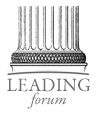 
Posted by Michael McKinney at 04:43 PM
09.25.25

Leading Thoughts for September 25, 2025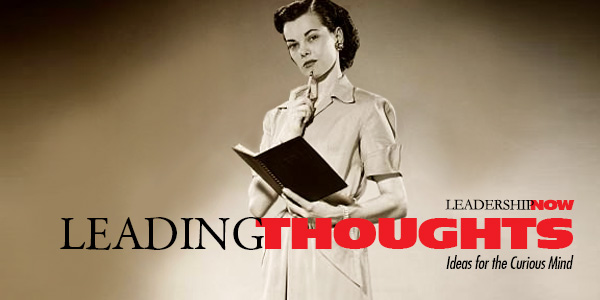
IDEAS shared have the power to expand perspectives, change thinking, and move lives. Here are two ideas for the curious mind to engage with: Matt Cooke on surrender: “Surrender isn't giving up; it's letting go of the need to control what's never been yours to carry. There's power in releasing the grip. In trusting the process even when you can't see the outcome. You weren't meant to figure it all out; you were meant to feel your way through it. When you surrender, you create space. When you trust, you allow movement. That's where things shift, not through force, but through flow. So, if it feels uncertain right now, that's okay. You're not lost. You're just in the space between. Let go. Lean in. And trust that what's meant for you knows exactly how to find you. So, remember, surrender isn't giving up, it’s allowing in.” Source: Beyond Wanting: The Art of True Manifestation William Vanderbloemen on self-awareness: “Being self-aware makes you better at finding solutions. Knowing yourself comes with a guaranteed pinch (or more) of humility, so when a self-aware person is faced with a challenge, they can decenter themselves from the issue. Being self-aware is knowing all about you while knowing that it’s not all about you. Whatever the crisis, the Self-Aware remain even-keeled and committed to the goal. A great summary of how self-awareness can serve you in a crisis is the first few lines of Rudyard Kipling s “If.” It’s all about keeping calm while others are losing their heads.” Source: Be the Unicorn: 12 Data-Driven Habits that Separate the Best Leaders from the Rest Look for these ideas every Thursday on the Leading Blog. Find more ideas on the LeadingThoughts index.
Posted by Michael McKinney at 12:23 PM
09.19.25

The Collective Edge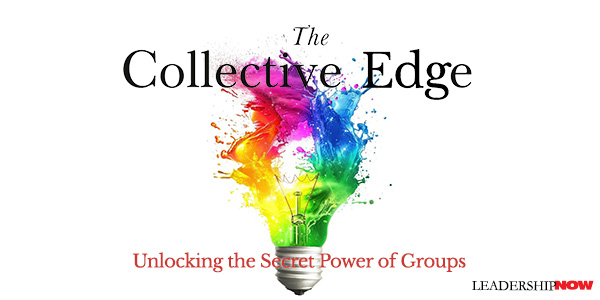
THE group(s) we identify with influence who we are – our thinking and behavior. We are a reflection of the groups we identify with. In The Collective Edge, Colin Fisher explains that “Understanding human behavior means understanding group dynamics—the obvious and hidden ways in which our thoughts, feelings, and behaviors are shaped by groups.” In addition, “Whether you want to change yourself, your work group, or the world, you need to work with the invisible forces of group dynamics instead of being mindlessly pushed around by them.” We tend to think in terms of individual actors rather than groups, especially when it comes to leadership. Whether things go right or wrong, we look for individualistic explanations, overlooking the role of groups. Fisher reimagines leadership “not as the province of individual heroes and villains, but as a team sport in which we all do our part to improve and maintain our groups’ fundamental structure.” Cooperation depends on the group. We tend to overemphasize the individualistic mindset, focusing on the individual rather than the influence of the group the individual is a part of. The answer to many of today’s problems rests in group dynamics. “Groups offer: a vehicle to accomplish what you can’t do alone and provide a sense of belonging.” Under what conditions does effective collaboration take place? Group synergy requires differences in what people know, think, and do. When a group is too similar in thinking, we get conformity. Too diverse, and the group may struggle to come together, but that’s not always the case. Conformity is not all bad, as we might first imagine. We need some conformity to cooperate. The need to fit in is one of the most powerful forms of social control over human behavior. “Being a member of a group changes how people see reality. Two groups can see the same event but believe wildly different things about it. Groups are a lens through which members view what is true. When a situation is new and uncertain, norms emerge quickly and most people fall in line rather than sticking up for their own (weakly held) points of view. In fact, many people adopt group norms so quickly, they don’t even realize they changed their own views.” When we disagree with others, we should become like detectives. “When there’s disagreement, members should ask: ‘Why did you think that? What led you to that view?’” Seek out information before making a decision or judgment. When adding new members to our group, before rushing in to indoctrinate them, we have an opportunity to learn. In doing so, we help fight conformity. Other people think differently from us, and hearing their perspectives helps us make better decisions. “Competition is a powerful motivator, but you need to know when it helps and when it hurts performance.” Done right, competition can bring out the best in others. But competition is often not about getting better but winning. Something to keep in mind: “When you are doing well-mastered tasks, competing can spur you on to new heights. But when you are still learning, competing is likely to hurt you.” The productive side of conflict is called task conflict—differences in ideas—how or what. But when disagreements turn personal, we have relational conflict. Relational conflict derails the group from problem-solving and breeds contempt and the cohesion of the group itself. Group splits are common when relational conflict arises. “Intergroup conflict can temporarily be put aside when we find common causes that allow us to see ourselves as part of a larger, shared group.” We’ve seen too many groups split because they can’t work from what they share in common. There are people in every group who try to stir up trouble. “They’re the ones who try to keep groups apart and encourage prejudice and conflict. Those who look to blame any problem on the other group and stoke anger. Those who demonize and dehumanize others.” A productive group will keep the conflict focused on the task and not on other people. Fisher says, “The main signs of relationship conflict I look for are personal attributions, or when members start talking about others in terms of traits or dispositions rather than the specific issue at hand.” Group leadership should be shared. We all share a responsibility to the group. “People use ‘leadership’ as a cognitive shortcut when trying to understand the causes of complex collective phenomena.” We look at the wrong thing. 
Posted by Michael McKinney at 06:27 PM
09.18.25

Leading Thoughts for September 18, 2025
IDEAS shared have the power to expand perspectives, change thinking, and move lives. Here are two ideas for the curious mind to engage with: Jeffrey Hull and Margaret Moore on humility and performance: “Humble leaders, and their organizations, may not perform better than those led by leaders who are not humble. However, the performance and well-being of the workforce is better when led by humble leaders. A tentative conclusion is that leaders who lead with humility it for others’ benefit, not for the sake of their own performance.” Source: The Science of Leadership: Nine Ways to Expand Your Impact British essayist and novelist Pico Iyer on stepping back: “It’s easy to feel as if we’re standing two inches away from a huge canvas that’s noisy and crowded and changing with every microsecond. It’s only by stepping farther back and standing still that we can begin to see what that canvas (which is our life) really means, and to take in the larger picture.” Source: The Art of Stillness: Adventures in Going Nowhere Look for these ideas every Thursday on the Leading Blog. Find more ideas on the LeadingThoughts index.
Posted by Michael McKinney at 12:19 PM
09.11.25

Leading Thoughts for September 11, 2025
IDEAS shared have the power to expand perspectives, change thinking, and move lives. Here are two ideas for the curious mind to engage with: Colin Fisher on group dynamics: “Being a member of a group changes how people see reality. Two groups can see the same event but believe wildly different things about it. Groups are a lens through which members view what is true. When a situation is new and uncertain, norms emerge quickly and most people fall in line rather than sticking up for their own (weakly held) points of view. In fact, many people adopt group norms so quickly, they don’t even realize they changed their own views.” Source: The Collective Edge: Unlocking the Secret Power of Groups Margaret Andrews on self-understanding: “Self-understanding is the foundation of effective leadership. However, society doesn’t emphasize self-understanding. With advertisers telling us what we should want and how we should measure success (usually money and the things money can buy), the power of influencers, the desire for ‘likes’ on our social media posts, and often families that push us to ‘succeed,’ we’re taught to chase what others have, to want what others want, and to care more about status and approval than self-understanding, personal growth, or living a meaningful life. Looking externally rather than internally leads to a lack of clarity about who we are and what we want, and this lack of clarity can lead us to make bad decisions.” Source: Manage Yourself to Lead Others: Why Great Leadership Begins with Self-Understanding Look for these ideas every Thursday on the Leading Blog. Find more ideas on the LeadingThoughts index.
Posted by Michael McKinney at 02:33 PM
09.04.25

Leading Thoughts for September 4, 2025
IDEAS shared have the power to expand perspectives, change thinking, and move lives. Here are two ideas for the curious mind to engage with: Hemant Taneja on radical collaboration: “Lobbing ‘disruptive’ innovations like random hand grenades into such large, established, and important sectors usually only changes things on the fringes. Those who work on the inside, who have spent their lives in their professions, get the sense that outsiders are invading and telling them they are outmoded or worthless, so they understandably push back. They might outright reject the innovation—or lobby to get policymakers to regulate the innovation away. Systemic transformation gets throttled when these disruptors fail to work with the system. Disruption needs to be disrupted, so to speak, by radical collaboration.” Source: The Transformation Principles: How to Create Enduring Change Rolf Dobelli on values: “When it comes to important issues, values allow you to have radical flexibility. Once you’ve defined your values clearly, you don’t have to weigh the pros and cons every time you are faced with a decision. It’s already been made for you.” Source: The Art of the Good Life: 52 Surprising Shortcuts to Happiness, Wealth, and Success Look for these ideas every Thursday on the Leading Blog. Find more ideas on the LeadingThoughts index.
Posted by Michael McKinney at 12:37 PM
09.01.25

First Look: Leadership Books for September 2025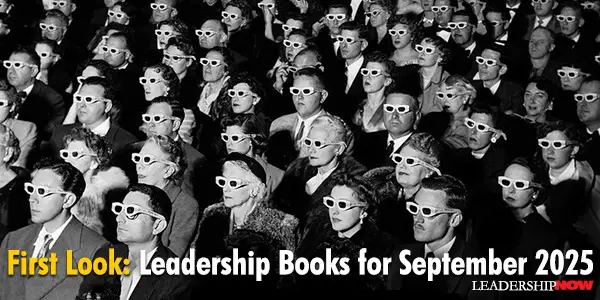
HERE'S A LOOK at some of the best leadership books to be released in September 2025 curated just for you. Be sure to check out the other great titles being offered this month.
Why are groups so hard? From boring work meetings to dysfunctional families to warring nations, group dynamics shape every aspect of our lives. How can we avoid the common pitfalls of living and working together and get the most from our groups? The solution isn’t to change individuals—it’s to understand the world from a collective perspective. In The Collective Edge, Colin Fisher, one of the world’s foremost experts on group dynamics, distills decades of research into practical strategies to help groups function at their highest levels. The secret to getting the most from your groups is knowing how to work with the invisible forces of group dynamics instead of being mindlessly pushed around by them. Whether you’re a leader, team member, or simply interested in better understanding how groups work, The Collective Edge provides essential wisdom that will help your groups unlock their true potential.
Based on real-world evidence from senior executives and successful entrepreneurs, this book argues that an effective leader must act like an ambivert: an introvert at times and an extrovert at others. Thanks to landmark books such as How to Win Friends and Influence People, many professionals think that only extroverts can be standout leaders, but Karl Moore’s interviews with over 750 CEOs from around the world prove that introverts make excellent leaders too. These insights make clear that the optimal leadership style is ambivert, with senior leaders combining introversion―being excellent listeners and thinking before they speak―and extroversion―inspiring and connecting with their teams. This book teaches how introverts and extroverts work, manage, and lead effectively and how readers can be better leaders regardless of their natural communication style. It empowers leaders to celebrate the strengths of their personality type while being flexible and to understand when to incorporate the strengths of other types into their leadership approach to be more effective.
What is the “best” way to lead others? The answer may surprise you. The basis for powerful, effective leadership comes from within—from understanding the people, ideas, and events that have shaped your worldview and how these influences express themselves in your leadership style. In Manage Yourself to Lead Others, leadership expert Margaret Andrews helps you understand yourself and translate this understanding into effectively managing yourself, leading others, working with your boss, and making better decisions. Andrews has taught thousands of executives in her professional development course at Harvard, and she shares her insights, practical tips, and questions for reflection here. This book will allow you to identify the kind of leader you want to be, the behavioral patterns that help get you there or stand in your way, and what it takes to develop new leadership capabilities.
Since 2020, global events have reshaped our expectations of work and leadership. Today's workforce seeks more than just a paycheck; they crave meaning, purpose, connection, and belonging. Traditional leadership models no longer suffice. In The Secure Leader, Dr. Jaime Goff offers a groundbreaking path forward. She argues that true leadership begins not with mastering techniques, but with understanding who you are and why you lead. Embark on a transformative journey of self-discovery and learn how to: • Deconstruct Your Story: Explore how your early experiences have shaped your worldview and leadership approach, often embedding hidden anxieties and insecurities. • Identify Key Themes: Recognize the constructive and destructive patterns that influence your interactions and decisions. • Re-author Your Narrative: Develop a new, empowering leadership story that honors your past, strengthens your present, and creates a foundation for a fulfilling future.
In their important new book, Wharton professor Peter Cappelli and workplace strategist Ranya Nehmeh deliver a balanced, research-based approach to navigating the complex landscape of remote and hybrid work. They provide a fresh perspective on why hybrid models often fail and what organizations must do differently to succeed in this new era―with takeaways that may not be welcome to all. In this timely book, discover: + Why remote work succeeded initially but has become increasingly problematic over time + What has been lost with the move away from in-office work, The hidden benefits of in-person work, How work dynamics post-pandemic have further influenced workplace culture and employee attitudes, How career advancement opportunities have changed, How new hires are faring, and How the changes have impacted home life. In Praise of the Office also reveals when in-office works best, when fully remote work works best, and what is required to make hybrid work. Plus, it identifies what aspects of hybrid can do the most damage to employers and employees.
Capitalism has historically focused on profit generation, with positive impact left to non-profits. This system has fueled unprecedented growth, but has also generated unsustainable consequences—deepening inequality, widespread job displacement, and eroding social trust. It’s time for a new paradigm—one that recognizes the inextricable link between positive impact and returns. Long-term profitability depends on maintaining public trust, societal wellbeing, and operating legitimacy. This new reality necessitates a new set of principles—transformation principles—to guide our decision-making as we build for growth and for good.
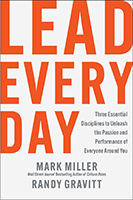 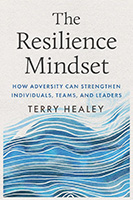 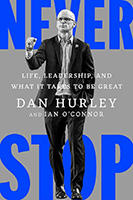 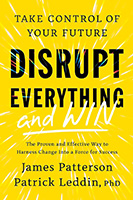
“You can't think well without writing well, and you can't write well without reading well. And I mean that last "well" in both senses. You have to be good at reading, and read good things.” — Paul Graham, Y Combinator co-founder
Posted by Michael McKinney at 08:49 AM
|
BUILD YOUR KNOWLEDGE
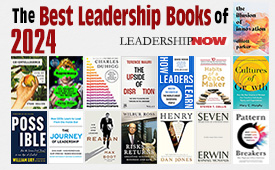
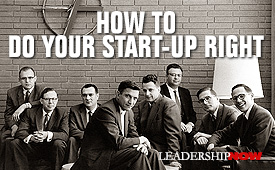
How to Do Your Start-Up Right STRAIGHT TALK FOR START-UPS 
Grow Your Leadership Skills NEW AND UPCOMING LEADERSHIP BOOKS 
Leadership Minute BITE-SIZE CONCEPTS YOU CAN CHEW ON 
Classic Leadership Books BOOKS TO READ BEFORE YOU LEAD |
|